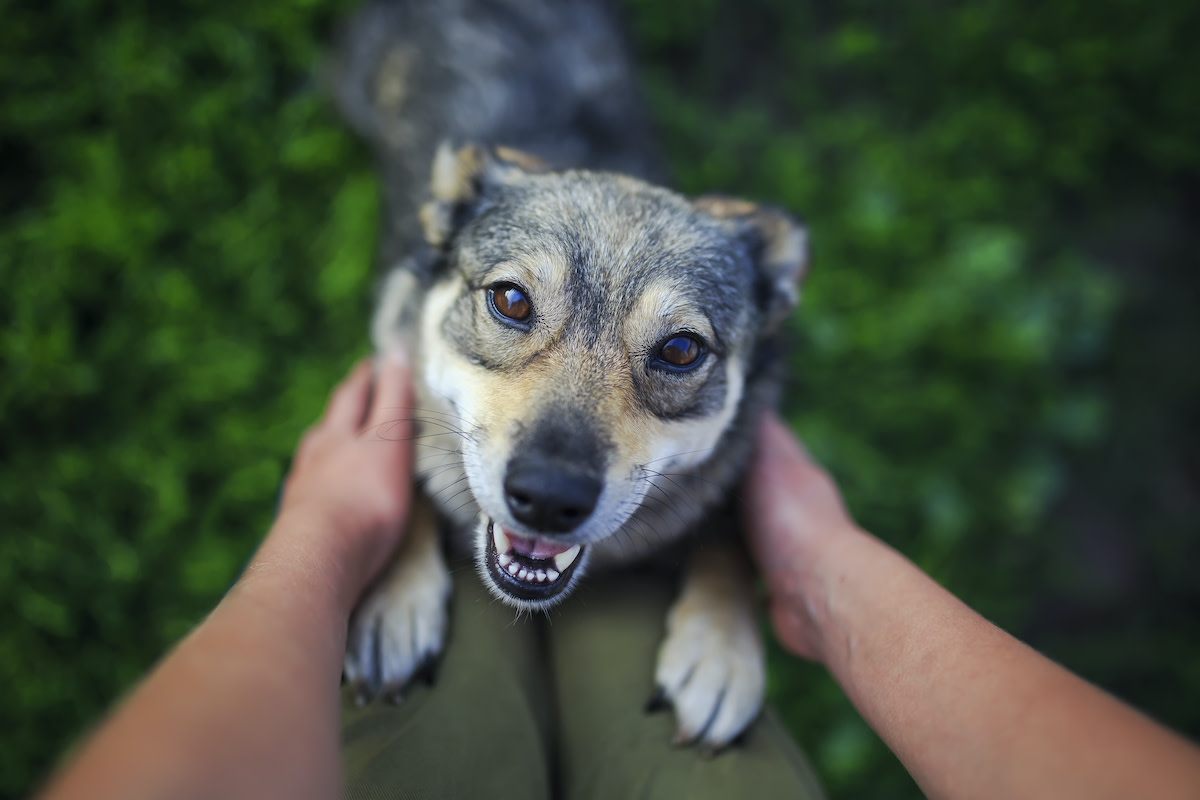How to Stop Your Dog From Jumping on People
Written by MasterClass
Last updated: Jan 21, 2022 • 4 min read
One of the most common behavioral problems pet parents face is their dog jumping up on people. You don't need to be a professional dog trainer to correct this behavior. All you need are the right training methods, consistency, and patience.
Learn From the Best
Why Do Some Dogs Jump on People?
When two dogs meet, they often greet each other face-to-face. This is part of normal canine greeting behavior and likely the reason some dogs jump up to greet visitors and family members. Though this behavior may be acceptable between canines, dogs jumping up on you, visitors, or strangers can be a serious behavior problem.
A jumping dog can cause injury to humans and wreak havoc in your home. If left unchecked, jumping behavior can lead to other behavioral problems, such as counter-surfing, in which your dog jumps up to steal food off your countertops. Inappropriate dog behavior can also be a sign of separation anxiety, an attention-seeking gesture, or the result of a lack of exercise. If your dog has trouble with jumping, set aside time for deliberate training sessions in which you teach a series of commands to help set them up for success.
How to Stop a Dog From Jumping on People
With proper training, you can teach appropriate dog greeting behavior and keep your dog from jumping up on you (and others) each time you walk in the front door.
- 1. Make your dog sit. The sit command is a foundational dog training command that is crucial for correcting myriad behavioral problems. When a family member or guest walks in the front door, direct your dog to sit. Instruct the visitor not to give your dog attention until your dog is able to stay seated. Once they can stay seated, allow your guest to greet them calmly. Continue to get your dog to sit if they make further attempts to jump up. Reward good behavior with positive reinforcement via treats or praise.
- 2. Train your dog with the “four on the floor” method. “Four on the floor” is a training technique that is especially effective with food-motivated dogs. Put your dog on a leash and have a family member or friend approach your dog. Before your dog has the opportunity to jump, give them a treat or drop treats on the floor. While your dog is distracted by the treats, have the person greet them. When they finish eating, have the person step back and start again. If the dog jumps up at any point, have your friend back away and don’t give your dog a treat or attention. After several repetitions, your dog should start to make the connection that having all four paws on the floor brings the kind of reward they're looking for.
- 3. Train your dog the “off” command. “Off” is a helpful command that will apply to many different scenarios, but it is especially beneficial to dogs that struggle with jumping behavior. Start by training the command in a distraction-free environment. Put a leash on your dog and have them sit in front of you. While stepping on the end of the leash, get your dog excited. When they start to jump on you, stand up tall and firmly say, "off." When they stop jumping, wait for ten to fifteen seconds before rewarding them. Rewarding them right away could lead to reinforcing the jumping behavior.
3 Tips for Training Your Dog Not to Jump
Whether you just bought a new puppy or adopted an adult dog, consider some tips and training techniques to kickstart your sessions.
- 1. Perform all training on leash. The cornerstone of all training is control. A controlled animal is focused, calm, and attentive—ready to listen and respond to instruction. Since using a leash gives you 90 percent more control over your dog, you should do all training on leash—not so that you can yank it hard when your dog doesn’t listen, but so that you can stay in control and calmly maintain your dog’s attention.
- 2. Keep it consistent and upbeat. While you may be desperately training your dog so that you can save your last few pairs of shoes from chew marks, for your dog, training is all about developing a relationship with you. They listen to commands because they want to please you. By doing training sessions regularly and with an upbeat attitude, you will build trust and affection between you and your dog. No matter which command you’re working on, you’ll want to train your dog in fifteen-minute sessions three times a day. Always make sure to end each session on a good note with your dog successfully performing the technique to continue the positive reinforcement.
- 3. Be prepared for ups and downs. The best preparation a dog owner can do when beginning dog training is mental. Know that there will be ups and downs in the training cycle. Some days, it’ll seem like your dog can do no wrong—the two of you will be perfectly in sync and your pup will be flying through the commands. Other days, you’ll have to try again and again to get him or her to cooperate. Rest assured that a bad training session does not mean you’ve failed or that your dog has no hope of learning the command. Training is a marathon, not a sprint.
Want to Learn More About Training the Goodest Boy or Girl?
Your dream of having a dog who understands words like “sit,” “stay,” “down,” and—crucially— “no” is just a MasterClass Annual Membership away. The only things you’ll need to train up a well-behaved pup are your laptop, a big bag of treats, and our exclusive instructional videos from superstar animal trainer Brandon McMillan.
